262 papers:
 DAC-2015-KehrQBS #communication #execution #legacy #manycore #parallel
DAC-2015-KehrQBS #communication #execution #legacy #manycore #parallel- Parallel execution of AUTOSAR legacy applications on multicore ECUs with timed implicit communication (SK, EQ, BB, GS), p. 6.
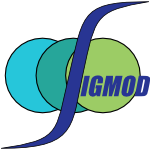 SIGMOD-2015-AlexandrovKKSTK #parallel
SIGMOD-2015-AlexandrovKKSTK #parallel- Implicit Parallelism through Deep Language Embedding (AA, AK, AK, FS, LT, OK, TH, VM), pp. 47–61.
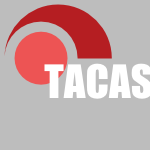 TACAS-2015-TomascoI0TP #contest #memory management
TACAS-2015-TomascoI0TP #contest #memory management- MU-CSeq 0.3: Sequentialization by Read-Implicit and Coarse-Grained Memory Unwindings — (Competition Contribution) (ET, OI, BF, SLT, GP), pp. 436–438.
 CHI-2015-HanXSCW #design #game studies #mobile #monitoring
CHI-2015-HanXSCW #design #game studies #mobile #monitoring- Balancing Accuracy and Fun: Designing Camera Based Mobile Games for Implicit Heart Rate Monitoring (TH, XX, LS, JFC, JW), pp. 847–856.
 HCI-IT-2015-MijovicMMMKG #fault #human-computer #predict #towards
HCI-IT-2015-MijovicMMMKG #fault #human-computer #predict #towards- Towards Creation of Implicit HCI Model for Prediction and Prevention of Operators’ Error (PM, MM, MM, IM, VK, IG), pp. 341–352.
 RecSys-2015-LimML #feedback #recommendation
RecSys-2015-LimML #feedback #recommendation- Top-N Recommendation with Missing Implicit Feedback (DL, JM, GRGL), pp. 309–312.
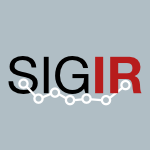 SIGIR-2015-ZhangGKDDCGH #adaptation #feedback #named #query
SIGIR-2015-ZhangGKDDCGH #adaptation #feedback #named #query- adaQAC: Adaptive Query Auto-Completion via Implicit Negative Feedback (AZ, AG, WK, HD, AD, YC, CAG, JH), pp. 143–152.
 ECOOP-2015-PradelS #empirical #javascript
ECOOP-2015-PradelS #empirical #javascript- The Good, the Bad, and the Ugly: An Empirical Study of Implicit Type Conversions in JavaScript (MP, KS), pp. 519–541.
 GPCE-2015-InostrozaS #algebra #composition #using
GPCE-2015-InostrozaS #algebra #composition #using- Modular interpreters for the masses: implicit context propagation using object algebras (PI, TvdS), pp. 171–180.
 SAC-2015-PapouliasDDF #towards
SAC-2015-PapouliasDDF #towards- Reifying the reflectogram: towards explicit control for implicit reflection (NP, MD, SD, LF), pp. 1978–1985.
 ICSE-v2-2015-Bichhawat #analysis
ICSE-v2-2015-Bichhawat #analysis- Post-Dominator Analysis for Precisely Handling Implicit Flows (AB), pp. 787–789.
 DATE-2014-BanagaayaAST #network #order #reduction
DATE-2014-BanagaayaAST #network #order #reduction- Implicit index-aware model order reduction for RLC/RC networks (NB, GA, WHAS, CT), pp. 1–6.
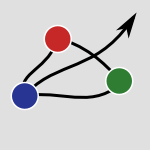 HT-2014-ZhangBR #analysis #empirical #network #social #social media
HT-2014-ZhangBR #analysis #empirical #network #social #social media- Empirical analysis of implicit brand networks on social media (KZ, SB, SR), pp. 190–199.
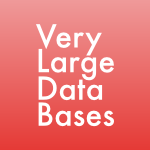 VLDB-2014-LiagourisT #identification #knowledge base #owl #performance
VLDB-2014-LiagourisT #identification #knowledge base #owl #performance- Efficient Identification of Implicit Facts in Incomplete OWL2-EL Knowledge Bases (JL, MT), pp. 1993–2004.
 TACAS-2014-CimattiGMT #abstraction #modulo theories
TACAS-2014-CimattiGMT #abstraction #modulo theories- IC3 Modulo Theories via Implicit Predicate Abstraction (AC, AG, SM, ST), pp. 46–61.
 CHI-2014-BurgbacherH #gesture #type system #verification
CHI-2014-BurgbacherH #gesture #type system #verification- An implicit author verification system for text messages based on gesture typing biometrics (UB, KHH), pp. 2951–2954.
 CHI-2014-GoyalLCF #analysis #collaboration
CHI-2014-GoyalLCF #analysis #collaboration- Effects of implicit sharing in collaborative analysis (NG, GL, DC, SRF), pp. 129–138.
 CHI-2014-SuAL
CHI-2014-SuAL- The implicit fan cursor: a velocity dependent area cursor (XS, OKCA, RWHL), pp. 753–762.
 CIKM-2014-CamposDJN #named #query
CIKM-2014-CamposDJN #named #query- GTE-Rank: Searching for Implicit Temporal Query Results (RC, GD, AMJ, CN), pp. 2081–2083.
 CIKM-2014-ZhongPXYM #adaptation #collaboration #learning #recommendation
CIKM-2014-ZhongPXYM #adaptation #collaboration #learning #recommendation- Adaptive Pairwise Preference Learning for Collaborative Recommendation with Implicit Feedbacks (HZ, WP, CX, ZY, ZM), pp. 1999–2002.
 ECIR-2014-CamposDJN #clustering #interface #named #query
ECIR-2014-CamposDJN #clustering #interface #named #query- GTE-Cluster: A Temporal Search Interface for Implicit Temporal Queries (RC, GD, AMJ, CN), pp. 775–779.
 ICML-c2-2014-LinDH0 #classification #encoding #multi
ICML-c2-2014-LinDH0 #classification #encoding #multi- Multi-label Classification via Feature-aware Implicit Label Space Encoding (ZL, GD, MH, JW), pp. 325–333.
 ICPR-2014-ChenH #composition #detection
ICPR-2014-ChenH #composition #detection- Implicit Rank-Sparsity Decomposition: Applications to Saliency/Co-saliency Detection (YLC, CTH), pp. 2305–2310.
 ICPR-2014-HuynhCM #3d #constraints #geometry #using #video
ICPR-2014-HuynhCM #3d #constraints #geometry #using #video- Aerial Implicit 3D Video Stabilization Using Epipolar Geometry Constraint (LH, JC, GGM), pp. 3487–3492.
 ICPR-2014-KrytheL #analysis #linear
ICPR-2014-KrytheL #analysis #linear- Implicitly Constrained Semi-supervised Linear Discriminant Analysis (JHK, ML), pp. 3762–3767.
 ICPR-2014-ManzatoDMR #feedback #personalisation #ranking #recommendation #topic
ICPR-2014-ManzatoDMR #feedback #personalisation #ranking #recommendation #topic- Improving Personalized Ranking in Recommender Systems with Topic Hierarchies and Implicit Feedback (MGM, MAD, RMM, SOR), pp. 3696–3701.
 RecSys-2014-Aiolli #feedback #optimisation #recommendation
RecSys-2014-Aiolli #feedback #optimisation #recommendation- Convex AUC optimization for top-N recommendation with implicit feedback (FA), pp. 293–296.
 RecSys-2014-FazeliLBDS #matrix #social #trust
RecSys-2014-FazeliLBDS #matrix #social #trust- Implicit vs. explicit trust in social matrix factorization (SF, BL, AB, HD, PBS), pp. 317–320.
 RecSys-2014-LercheJ #feedback #personalisation #ranking #using
RecSys-2014-LercheJ #feedback #personalisation #ranking #using- Using graded implicit feedback for bayesian personalized ranking (LL, DJ), pp. 353–356.
 SEKE-2014-TianWHZG #feedback #recommendation #using #web #web service
SEKE-2014-TianWHZG #feedback #recommendation #using #web #web service- Cold-Start Web Service Recommendation Using Implicit Feedback (GT, JW, KH, WZ, PG), pp. 371–376.
 MoDELS-2014-BakiSCMF #learning #model transformation
MoDELS-2014-BakiSCMF #learning #model transformation- Learning Implicit and Explicit Control in Model Transformations by Example (IB, HAS, QC, PM, MF), pp. 636–652.
 MoDELS-2014-BakiSCMF #learning #model transformation
MoDELS-2014-BakiSCMF #learning #model transformation- Learning Implicit and Explicit Control in Model Transformations by Example (IB, HAS, QC, PM, MF), pp. 636–652.
 ECOOP-2014-ScherrC #staging
ECOOP-2014-ScherrC #staging- Implicit Staging of EDSL Expressions: A Bridge between Shallow and Deep Embedding (MS, SC), pp. 385–410.
 SAC-2014-GuoZTBY #empirical #recommendation #trust
SAC-2014-GuoZTBY #empirical #recommendation #trust- From ratings to trust: an empirical study of implicit trust in recommender systems (GG, JZ, DT, AB, NYS), pp. 248–253.
 PPoPP-2014-AgrawalFSSU #data type #parallel #scheduling #source code
PPoPP-2014-AgrawalFSSU #data type #parallel #scheduling #source code- Provably good scheduling for parallel programs that use data structures through implicit batching (KA, JTF, BS, JS, RU), pp. 389–390.
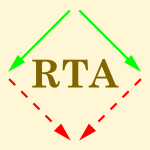 RTA-TLCA-2014-CarvalhoS #decidability #polynomial #set
RTA-TLCA-2014-CarvalhoS #decidability #polynomial #set- An Implicit Characterization of the Polynomial-Time Decidable Sets by Cons-Free Rewriting (DdC, JGS), pp. 179–193.
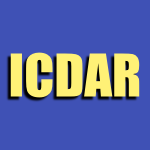 ICDAR-2013-SeokK #recognition
ICDAR-2013-SeokK #recognition- Scene Text Recognition with a Hough Forest Implicit Shape Model (JHS, JHK), pp. 599–603.
 ITiCSE-2013-ScottG #learning #programming #question
ITiCSE-2013-ScottG #learning #programming #question- Implicit theories of programming aptitude as a barrier to learning to code: are they distinct from intelligence? (MJS, GG), p. 347.
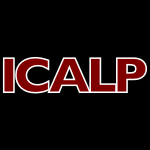 ICALP-v2-2013-LeivantM #complexity #evolution
ICALP-v2-2013-LeivantM #complexity #evolution- Evolving Graph-Structures and Their Implicit Computational Complexity (DL, JYM), pp. 349–360.
 SEFM-2013-TranST #composition #static analysis #transaction
SEFM-2013-TranST #composition #static analysis #transaction- Compositional Static Analysis for Implicit Join Synchronization in a Transactional Setting (TMTT, MS, HT), pp. 212–228.
 CHI-2013-ZhaoWB #multi #named
CHI-2013-ZhaoWB #multi #named- TrailMap: facilitating information seeking in a multi-scale digital map via implicit bookmarking (JZ, DW, RB), pp. 3009–3018.
 DUXU-PMT-2013-Bystricky
DUXU-PMT-2013-Bystricky- Techno-imagination and Implicit Knowledge (JB), pp. 22–28.
 RecSys-2013-BlancoR #feedback #recommendation
RecSys-2013-BlancoR #feedback #recommendation- Acquiring user profiles from implicit feedback in a conversational recommender system (HB, FR), pp. 307–310.
 RecSys-2013-OstuniNSM #feedback #linked data #open data #recommendation
RecSys-2013-OstuniNSM #feedback #linked data #open data #recommendation- Top-N recommendations from implicit feedback leveraging linked open data (VCO, TDN, EDS, RM), pp. 85–92.
 RecSys-2013-YuRSSKGNH #feedback #network #recommendation
RecSys-2013-YuRSSKGNH #feedback #network #recommendation- Recommendation in heterogeneous information networks with implicit user feedback (XY, XR, YS, BS, UK, QG, BN, JH), pp. 347–350.
 SIGIR-2013-Ma #case study #recommendation #social
SIGIR-2013-Ma #case study #recommendation #social- An experimental study on implicit social recommendation (HM), pp. 73–82.
 SIGIR-2013-MoshfeghiJ #behaviour #effectiveness #feedback #using
SIGIR-2013-MoshfeghiJ #behaviour #effectiveness #feedback #using- An effective implicit relevance feedback technique using affective, physiological and behavioural features (YM, JMJ), pp. 133–142.
 SAC-2013-Manzato #feedback #metadata #recommendation
SAC-2013-Manzato #feedback #metadata #recommendation- gSVD++: supporting implicit feedback on recommender systems with metadata awareness (MGM), pp. 908–913.
 HT-2012-MatthesNS #folksonomy
HT-2012-MatthesNS #folksonomy- Structuring folksonomies with implicit tag relations (FM, CN, AS), pp. 315–316.
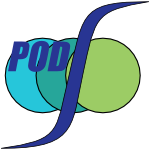 PODS-2012-Mahoney #approximate #data analysis #scalability
PODS-2012-Mahoney #approximate #data analysis #scalability- Approximate computation and implicit regularization for very large-scale data analysis (MWM), pp. 143–154.
 PEPM-2012-GotoS #approach #functional
PEPM-2012-GotoS #approach #functional- An approach to completing variable names for implicitly typed functional languages (TG, IS), pp. 131–140.
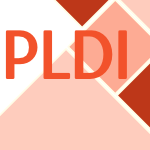 PLDI-2012-OliveiraSCLY #calculus #programming
PLDI-2012-OliveiraSCLY #calculus #programming- The implicit calculus: a new foundation for generic programming (BCdSO, TS, WC, WL, KY), pp. 35–44.
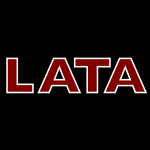 LATA-2012-BolligP #algorithm #performance
LATA-2012-BolligP #algorithm #performance- An Efficient Implicit OBDD-Based Algorithm for Maximal Matchings (BB, TP), pp. 143–154.
 CHI-2012-DearmanT #using
CHI-2012-DearmanT #using- Evaluating the implicit acquisition of second language vocabulary using a live wallpaper (DD, KNT), pp. 1391–1400.
 CHI-2012-HoarauC #interactive #visual notation
CHI-2012-HoarauC #interactive #visual notation- Augmenting the scope of interactions with implicit and explicit graphical structures (RH, SC), pp. 1937–1946.
 CHI-2012-LucaHBLH #authentication #exclamation
CHI-2012-LucaHBLH #authentication #exclamation- Touch me once and i know it’s you!: implicit authentication based on touch screen patterns (ADL, AH, FB, CL, HH), pp. 987–996.
 CHI-2012-MustafaLM #analysis #visual notation
CHI-2012-MustafaLM #analysis #visual notation- EEG analysis of implicit human visual perception (MM, LL, MAM), pp. 513–516.
 CHI-2012-SeitlingerL #re-engineering #semantics #social
CHI-2012-SeitlingerL #re-engineering #semantics #social- Implicit imitation in social tagging: familiarity and semantic reconstruction (PS, TL), pp. 1631–1640.
 CIKM-2012-FangS #approach #feedback #learning #recommendation
CIKM-2012-FangS #approach #feedback #learning #recommendation- A latent pairwise preference learning approach for recommendation from implicit feedback (YF, LS), pp. 2567–2570.
 CIKM-2012-HongZCYZZ #recognition
CIKM-2012-HongZCYZZ #recognition- Cross-argument inference for implicit discourse relation recognition (YH, XZ, TC, JMY, QZ, GZ), pp. 295–304.
 CIKM-2012-LinXLHL #named #personalisation #recommendation #social
CIKM-2012-LinXLHL #named #personalisation #recommendation #social- PRemiSE: personalized news recommendation via implicit social experts (CL, RX, LL, ZH, TL), pp. 1607–1611.
 ICPR-2012-RadwanDG #detection #estimation
ICPR-2012-RadwanDG #detection #estimation- Correcting pose estimation with implicit occlusion detection and rectification (IR, AD, RG), pp. 3496–3499.
 KDD-2012-RamanSJ #feedback #learning #online
KDD-2012-RamanSJ #feedback #learning #online- Online learning to diversify from implicit feedback (KR, PS, TJ), pp. 705–713.
 KDD-2012-XiongJXC #dependence #learning #metric #random
KDD-2012-XiongJXC #dependence #learning #metric #random- Random forests for metric learning with implicit pairwise position dependence (CX, DMJ, RX, JJC), pp. 958–966.
 KEOD-2012-AbdelazzizN #ontology #recommendation #using
KEOD-2012-AbdelazzizN #ontology #recommendation #using- Enhancing the Results of Recommender Systems using Implicit Ontology Relations (LA, KN), pp. 5–14.
 KR-2012-Renz #constraints #reasoning
KR-2012-Renz #constraints #reasoning- Implicit Constraints for Qualitative Spatial and Temporal Reasoning (JR).
 RecSys-2012-MolingBR #feedback #recommendation
RecSys-2012-MolingBR #feedback #recommendation- Optimal radio channel recommendations with explicit and implicit feedback (OM, LB, FR), pp. 75–82.
 RecSys-2012-YangCZLY #feedback #mining #music #recommendation
RecSys-2012-YangCZLY #feedback #mining #music #recommendation- Local implicit feedback mining for music recommendation (DY, TC, WZ, QL, YY), pp. 91–98.
 SIGIR-2012-HeHV #topic
SIGIR-2012-HeHV #topic- Combining implicit and explicit topic representations for result diversification (JH, VH, APdV), pp. 851–860.
 SIGIR-2012-WhiteB #feedback
SIGIR-2012-WhiteB #feedback- Text selections as implicit relevance feedback (RWW, GB), pp. 1151–1152.
 REFSQ-2012-DaramolaMSB #perspective #reasoning #requirements #research #semantics #using
REFSQ-2012-DaramolaMSB #perspective #reasoning #requirements #research #semantics #using- Managing Implicit Requirements Using Semantic Case-Based Reasoning Research Preview (OD, TM, GS, SB), pp. 172–178.
 DAC-2011-Stergiou #diagrams #network #order #permutation
DAC-2011-Stergiou #diagrams #network #order #permutation- Implicit permutation enumeration networks and binary decision diagrams reordering (SS), pp. 615–620.
 HT-2011-AshmanACST
HT-2011-AshmanACST- Implicit association via crowd-sourced coselection (HA, MA, SC, GS, MT), pp. 7–16.
 ESOP-2011-ParkinsonS #logic
ESOP-2011-ParkinsonS #logic- The Relationship between Separation Logic and Implicit Dynamic Frames (MJP, AJS), pp. 439–458.
 PLDI-2011-PrabhuGZJA #commutative #parallel #programming #set
PLDI-2011-PrabhuGZJA #commutative #parallel #programming #set- Commutative set: a language extension for implicit parallel programming (PP, SG, YZ, NPJ, DIA), pp. 1–11.
 ICFP-2011-ChenDHA #functional #self #source code
ICFP-2011-ChenDHA #functional #self #source code- Implicit self-adjusting computation for purely functional programs (YC, JD, MAH, UAA), pp. 129–141.
 CHI-2011-DenningBDJ #memory management
CHI-2011-DenningBDJ #memory management- Exploring implicit memory for painless password recovery (TD, KDB, MvD, AJ), pp. 2615–2618.
 CSCW-2011-BalesLG #communication #mobile #named
CSCW-2011-BalesLG #communication #mobile #named- CoupleVIBE: mobile implicit communication to improve awareness for (long-distance) couples (EB, KAL, WGG), pp. 65–74.
 DHM-2011-Maier #human-computer #interactive #recognition
DHM-2011-Maier #human-computer #interactive #recognition- Implicit Human-Computer Interaction by Posture Recognition (EM), pp. 143–150.
 HCI-MIIE-2011-ChangL #design #interactive #social
HCI-MIIE-2011-ChangL #design #interactive #social- Express Yourself: Designing Interactive Products with Implicitness to Improve Social Interaction (HMC, RHL), pp. 175–184.
 HCI-MIIE-2011-KamiethBS #adaptation #interactive
HCI-MIIE-2011-KamiethBS #adaptation #interactive- Adaptive Implicit Interaction for Healthy Nutrition and Food Intake Supervision (FK, AB, CS), pp. 205–212.
 ICML-2011-MahoneyO #approximate #implementation
ICML-2011-MahoneyO #approximate #implementation- Implementing regularization implicitly via approximate eigenvector computation (MWM, LO), pp. 121–128.
 ICML-2011-SujeethLBRCWAOO #domain-specific language #machine learning #named #parallel
ICML-2011-SujeethLBRCWAOO #domain-specific language #machine learning #named #parallel- OptiML: An Implicitly Parallel Domain-Specific Language for Machine Learning (AKS, HL, KJB, TR, HC, MW, ARA, MO, KO), pp. 609–616.
 KDIR-2011-OzakiE #difference #empirical #estimation
KDIR-2011-OzakiE #difference #empirical #estimation- Estimation of Implicit user Influence from Proxy Logs — An Empirical Study on the Effects of Time Difference and Popularity (TO, ME), pp. 250–255.
 RecSys-2011-TakacsPT #collaboration #feedback
RecSys-2011-TakacsPT #collaboration #feedback- Applications of the conjugate gradient method for implicit feedback collaborative filtering (GT, IP, DT), pp. 297–300.
 OOPSLA-2011-AcarCR #parallel #scheduling
OOPSLA-2011-AcarCR #parallel #scheduling- Oracle scheduling: controlling granularity in implicitly parallel languages (UAA, AC, MR), pp. 499–518.
 PPoPP-2011-FengGH #commit #named #parallel #scalability
PPoPP-2011-FengGH #commit #named #parallel #scalability- SpiceC: scalable parallelism via implicit copying and explicit commit (MF, RG, YH), pp. 69–80.
 HT-2010-PaekHS #hypermedia #learning
HT-2010-PaekHS #hypermedia #learning- Spatial contiguity and implicit learning in hypertext (SP, DH, AS), pp. 291–292.
 HT-2010-YeungI #online #social
HT-2010-YeungI #online #social- Capturing implicit user influence in online social sharing (CmAY, TI), pp. 245–254.
 CSMR-2010-LiuM #analysis #case study #data flow
CSMR-2010-LiuM #analysis #case study #data flow- Static Information Flow Analysis with Handling of Implicit Flows and a Study on Effects of Implicit Flows vs Explicit Flows (YL, AM), pp. 146–155.
 IFM-2010-Stratulat #induction #proving
IFM-2010-Stratulat #induction #proving- Integrating Implicit Induction Proofs into Certified Proof Environments (SS), pp. 320–335.
 CHI-2010-KuikkaniemiLTSKR #game studies
CHI-2010-KuikkaniemiLTSKR #game studies- The influence of implicit and explicit biofeedback in first-person shooter games (KK, TL, MT, TS, IK, NR), pp. 859–868.
 CIKM-2010-LiuXZY #collaboration #feedback
CIKM-2010-LiuXZY #collaboration #feedback- Unifying explicit and implicit feedback for collaborative filtering (NNL, EWX, MZ, QY), pp. 1445–1448.
 ICML-2010-KulisB #learning #online
ICML-2010-KulisB #learning #online- Implicit Online Learning (BK, PLB), pp. 575–582.
 ICML-2010-NakajimaS #matrix
ICML-2010-NakajimaS #matrix- Implicit Regularization in Variational Bayesian Matrix Factorization (SN, MS), pp. 815–822.
 ICPR-2010-DupeBBLE #kernel
ICPR-2010-DupeBBLE #kernel- Kernel-Based Implicit Regularization of Structured Objects (FXD, SB, LB, OL, AE), pp. 2142–2145.
 ICPR-2010-HuYLS #3d #locality #multi #novel #using
ICPR-2010-HuYLS #3d #locality #multi #novel #using- A Novel Facial Localization for Three-dimensional Face Using Multi-level Partition of Unity Implicits (YH, JY, WL, PS), pp. 682–685.
 ICPR-2010-SungCCB #3d #estimation #mobile
ICPR-2010-SungCCB #3d #estimation #mobile- Coarse-to-Fine Particle Filter by Implicit Motion Estimation for 3D Head Tracking on Mobile Devices (HS, KC, SC, HB), pp. 3615–3618.
 ICPR-2010-ThiCZWS #modelling #recognition #using
ICPR-2010-ThiCZWS #modelling #recognition #using- Weakly Supervised Action Recognition Using Implicit Shape Models (THT, LC, JZ, LW, SS), pp. 3517–3520.
 ICPR-2010-YamakoshiHOKSSIYSM
ICPR-2010-YamakoshiHOKSSIYSM- Implicit Feature-Based Alignment System for Radiotherapy (RY, KH, HO, HK, KS, HS, YI, TY, DS, MM), pp. 2286–2289.
 KDD-2010-RothBDFHLLMM #graph #social #using
KDD-2010-RothBDFHLLMM #graph #social #using- Suggesting friends using the implicit social graph (MR, ABD, DD, GF, IH, AL, NL, YM, RM), pp. 233–242.
 KDIR-2010-SinghMG #feedback #query #realtime
KDIR-2010-SinghMG #feedback #query #realtime- Dynamic Query Expansion based on User’s Real Time Implicit Feedback (SRS, HAM, TAG), pp. 112–121.
 KDIR-2010-VeilumuthuR
KDIR-2010-VeilumuthuR- Aggregation of Implicit Feedbacks from Search Engine Log Files (AV, PR), pp. 269–274.
 RecSys-2010-PilaszyZT #dataset #feedback #matrix #performance
RecSys-2010-PilaszyZT #dataset #feedback #matrix #performance- Fast als-based matrix factorization for explicit and implicit feedback datasets (IP, DZ, DT), pp. 71–78.
 OOPSLA-2010-OliveiraMO
OOPSLA-2010-OliveiraMO- Type classes as objects and implicits (BCdSO, AM, MO), pp. 341–360.
 GPCE-2010-LongMSR #concurrent
GPCE-2010-LongMSR #concurrent- Implicit invocation meets safe, implicit concurrency (YL, SLM, TS, HR), pp. 63–72.
 SAC-2010-KrajcaV #functional #memory management #parallel #transaction
SAC-2010-KrajcaV #functional #memory management #parallel #transaction- Software transactional memory for implicitly parallel functional language (PK, VV), pp. 2123–2130.
 SAC-2010-PawlitzkiS
SAC-2010-PawlitzkiS- Implicit invocation of traits (TP, FS), pp. 2085–2089.
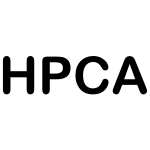 HPCA-2010-HuangSWSXM #named #permutation
HPCA-2010-HuangSWSXM #named #permutation- SIF: Overcoming the limitations of SIMD devices via implicit permutation (LH, LS, ZW, WS, NX, SM), pp. 1–12.
 CAV-2010-ChenCFTTW #automation #learning #reasoning
CAV-2010-ChenCFTTW #automation #learning #reasoning- Automated Assume-Guarantee Reasoning through Implicit Learning (YFC, EMC, AF, MHT, YKT, BYW), pp. 511–526.
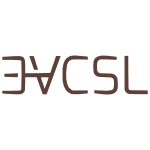 CSL-2010-Hetzl #calculus #representation
CSL-2010-Hetzl #calculus #representation- A Sequent Calculus with Implicit Term Representation (SH), pp. 351–365.
 CHI-2009-KostakosO #assessment #design #trust
CHI-2009-KostakosO #assessment #design #trust- Designing trustworthy situated services: an implicit and explicit assessment of locative images-effect on trust (VK, IO), pp. 329–332.
 CHI-2009-ZhaoNII #interface
CHI-2009-ZhaoNII #interface- Magic cards: a paper tag interface for implicit robot control (SZ, KN, KI, TI), pp. 173–182.
 HCI-NIMT-2009-BravoHFVCNFCPV #identification #interactive #towards
HCI-NIMT-2009-BravoHFVCNFCPV #identification #interactive #towards- From Implicit to Touching Interaction by Identification Technologies: Towards Tagging Context (JB, RH, CF, VV, GC, SWN, JF, GC, RP, MV), pp. 417–425.
 OCSC-2009-VoiskounskyMA #game studies
OCSC-2009-VoiskounskyMA #game studies- Gamers’ Implicit Knowledge on the Psychological Influence of Game-Playing (AEV, OVM, AAA), pp. 632–640.
 CIKM-2009-Paranjpe #documentation #feedback #learning
CIKM-2009-Paranjpe #documentation #feedback #learning- Learning document aboutness from implicit user feedback and document structure (DP), pp. 365–374.
 SIGIR-2009-BuscherED #comparison #eye tracking #feedback
SIGIR-2009-BuscherED #comparison #eye tracking #feedback- Segment-level display time as implicit feedback: a comparison to eye tracking (GB, LvE, AD), pp. 67–74.
 SIGIR-2009-MetzlerJPZ #query
SIGIR-2009-MetzlerJPZ #query- Improving search relevance for implicitly temporal queries (DM, RJ, FP, RZ), pp. 700–701.
 ECOOP-2009-SmansJP #logic
ECOOP-2009-SmansJP #logic- Implicit Dynamic Frames: Combining Dynamic Frames and Separation Logic (JS, BJ, FP), pp. 148–172.
 SAC-2009-ChengGL
SAC-2009-ChengGL- Topology determination and isolation for implicit plane curves (JSC, XSG, JL), pp. 1140–1141.
 SAC-2009-MartinsBPS #feedback #information retrieval
SAC-2009-MartinsBPS #feedback #information retrieval- Implicit relevance feedback for context-aware information retrieval in UbiLearning environments (DSM, MB, AFdP, WLdS), pp. 659–663.
 DAC-2008-Cummings #design #verification
DAC-2008-Cummings #design #verification- SystemVerilog implicit port enhancements accelerate system design & verification (CEC), pp. 231–236.
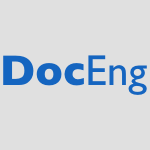 DocEng-2008-BalinskyWRA #automation #documentation
DocEng-2008-BalinskyWRA #automation #documentation- Automated repurposing of implicitly structured documents (HB, AW, MR, AAR), pp. 42–51.
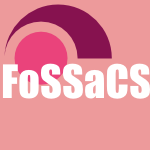 FoSSaCS-2008-BarrasB #calculus #dependent type #programming language
FoSSaCS-2008-BarrasB #calculus #dependent type #programming language- The Implicit Calculus of Constructions as a Programming Language with Dependent Types (BB, BB), pp. 365–379.
 ICFP-2008-FluetRRS #parallel #thread
ICFP-2008-FluetRRS #parallel #thread- Implicitly-threaded parallelism in Manticore (MF, MR, JHR, AS), pp. 119–130.
 CHI-2008-OviattSA #adaptation #interface #speech
CHI-2008-OviattSA #adaptation #interface #speech- Implicit user-adaptive system engagement in speech and pen interfaces (SLO, CS, AMA), pp. 969–978.
 CHI-2008-ShenoyT #image
CHI-2008-ShenoyT #image- Human-aided computing: utilizing implicit human processing to classify images (PS, DST), pp. 845–854.
 CSCW-2008-JuLK #design #interactive #named
CSCW-2008-JuLK #design #interactive #named- Range: exploring implicit interaction through electronic whiteboard design (WJ, BAL, SRK), pp. 17–26.
 ICEIS-ISAS2-2008-Nikovski #concurrent #mining #process #representation #workflow
ICEIS-ISAS2-2008-Nikovski #concurrent #mining #process #representation #workflow- Workflow Trees for Representation and Mining of Implicitly Concurrent Business Processes (DN), pp. 30–36.
 CIKM-2008-CardosoSS #information retrieval
CIKM-2008-CardosoSS #information retrieval- Handling implicit geographic evidence for geographic ir (NC, MJS, DS), pp. 1383–1384.
 ECIR-2008-ScholerSBT #using
ECIR-2008-ScholerSBT #using- Using Clicks as Implicit Judgments: Expectations Versus Observations (FS, MS, BB, AT), pp. 28–39.
 ECIR-2008-ValletHJ #evaluation #graph #recommendation
ECIR-2008-ValletHJ #evaluation #graph #recommendation- Use of Implicit Graph for Recommending Relevant Videos: A Simulated Evaluation (DV, FH, JMJ), pp. 199–210.
 ICML-2008-PuolamakiAK #learning #query
ICML-2008-PuolamakiAK #learning #query- Learning to learn implicit queries from gaze patterns (KP, AA, SK), pp. 760–767.
 ICPR-2008-JiangT #normalisation #robust
ICPR-2008-JiangT #normalisation #robust- Robust shape normalization based on implicit representations (TJ, CT), pp. 1–4.
 ICPR-2008-WimmerHS #bound #classification
ICPR-2008-WimmerHS #bound #classification- Implicit active shape model employing boundary classifier (AW, JH, GS), pp. 1–4.
 SAC-2008-SykoraAS #embedded #pipes and filters
SAC-2008-SykoraAS #embedded #pipes and filters- Dynamic configuration of application-specific implicit instructions for embedded pipelined processors (MS, GA, CS), pp. 1509–1516.
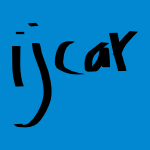 IJCAR-2008-AvanziniMS #analysis #automation #complexity
IJCAR-2008-AvanziniMS #analysis #automation #complexity- Automated Implicit Computational Complexity Analysis (System Description) (MA, GM, AS), pp. 132–138.
 DAC-2007-HwuRUKGSKBMTNLFP #modelling #parallel #programming
DAC-2007-HwuRUKGSKBMTNLFP #modelling #parallel #programming- Implicitly Parallel Programming Models for Thousand-Core Microprocessors (WmWH, SR, SZU, JHK, IG, SSS, REK, SSB, AM, SCT, NN, SSL, MIF, SJP), pp. 754–759.
 ICFP-2007-GhuloumD #library
ICFP-2007-GhuloumD #library- Implicit phasing for R6RS libraries (AG, RKD), pp. 303–314.
 ICFP-2007-HarrisS #feedback #parallel
ICFP-2007-HarrisS #feedback #parallel- Feedback directed implicit parallelism (TH, SS), pp. 251–264.
 CHI-2007-ToupsK #coordination #design #education
CHI-2007-ToupsK #coordination #design #education- Implicit coordination in firefighting practice: design implications for teaching fire emergency responders (ZOT, AK), pp. 707–716.
 CIKM-2007-MelucciW #feedback #geometry
CIKM-2007-MelucciW #feedback #geometry- Utilizing a geometry of context for enhanced implicit feedback (MM, RWW), pp. 273–282.
 RecSys-2007-Fu #feedback #web
RecSys-2007-Fu #feedback #web- Evaluating sources of implicit feedback in web searches (XF), pp. 191–194.
 RecSys-2007-GadanhoL #nondeterminism
RecSys-2007-GadanhoL #nondeterminism- Addressing uncertainty in implicit preferences (SCG, NL), pp. 97–104.
 PPoPP-2007-PraunCC #order #parallel #transaction
PPoPP-2007-PraunCC #order #parallel #transaction- Implicit parallelism with ordered transactions (CvP, LC, CC), pp. 79–89.
 DAC-2006-WongB #multi #performance #polynomial
DAC-2006-WongB #multi #performance #polynomial- Multi-shift quadratic alternating direction implicit iteration for high-speed positive-real balanced truncation (NW, VB), pp. 257–260.
 DATE-2006-McConaghyG #canonical #modelling #performance
DATE-2006-McConaghyG #canonical #modelling #performance- Double-strength CAFFEINE: fast template-free symbolic modeling of analog circuits via implicit canonical form functions and explicit introns (TM, GGEG), pp. 269–274.
 HT-2006-Delort #documentation #identification #using
HT-2006-Delort #documentation #identification #using- Identifying commented passages of documents using implicit hyperlinks (JYD), pp. 89–98.
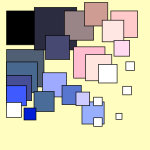 SCAM-J-2005-ZhangBCD06 #using
SCAM-J-2005-ZhangBCD06 #using- Using source transformation to test and model check implicit-invocation systems (HZ, JSB, JRC, JD), pp. 209–227.
 CIKM-2006-WhiteK #case study #feedback #performance #personalisation
CIKM-2006-WhiteK #case study #feedback #performance #personalisation- A study on the effects of personalization and task information on implicit feedback performance (RWW, DK), pp. 297–306.
 CIKM-2006-ZigorisZ #adaptation #feedback #profiling
CIKM-2006-ZigorisZ #adaptation #feedback #profiling- Bayesian adaptive user profiling with explicit & implicit feedback (PZ, YZ), pp. 397–404.
 ICPR-v1-2006-Solem #analysis
ICPR-v1-2006-Solem #analysis- Geodesic Curves for Analysis of Continuous Implicit Shapes (JES), pp. 43–46.
 ICPR-v1-2006-Solem06a #analysis
ICPR-v1-2006-Solem06a #analysis- Geodesic Curves for Analysis of Continuous Implicit Shapes (JES), pp. 852–855.
 SIGIR-2006-XuM
SIGIR-2006-XuM- Building implicit links from content for forum search (GX, WYM), pp. 300–307.
 SAC-2006-CavalinBBSO #recognition #string
SAC-2006-CavalinBBSO #recognition #string- An implicit segmentation-based method for recognition of handwritten strings of characters (PRC, AdSBJ, FB, RS, LESdO), pp. 836–840.
 SAC-2006-ShapiraTM
SAC-2006-ShapiraTM- Study of the usefulness of known and new implicit indicators and their optimal combination for accurate inference of users interests (BS, MTM, AM), pp. 1118–1119.
 CSL-2006-BonfanteKMO #towards
CSL-2006-BonfanteKMO #towards- Towards an Implicit Characterization of NCk (GB, RK, JYM, IO), pp. 212–224.
 SAT-2006-Thurley #component #modelling #named
SAT-2006-Thurley #component #modelling #named- sharpSAT — Counting Models with Advanced Component Caching and Implicit BCP (MT), pp. 424–429.
 DATE-2005-KumarTCJ #fault
DATE-2005-KumarTCJ #fault- Implicit and Exact Path Delay Fault Grading in Sequential Circuits (MMVK, ST, SC, RJ), pp. 990–995.
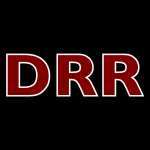 DRR-2005-BairdB
DRR-2005-BairdB- Implicit CAPTCHAs (HSB, JLB), pp. 191–196.
 ITiCSE-2005-Prakash05a
ITiCSE-2005-Prakash05a- Implicit functions lab: a collaboratory for computer graphics (ECP), p. 376.
 SCAM-2005-ZhangBCD #implementation #using #verification
SCAM-2005-ZhangBCD #implementation #using #verification- Implementation and Verification of Implicit-Invocation Systems Using Source Transformation (HZ, JSB, JRC, JD), pp. 87–96.
 CIKM-2005-ShenTZ #modelling #personalisation
CIKM-2005-ShenTZ #modelling #personalisation- Implicit user modeling for personalized search (XS, BT, CZ), pp. 824–831.
 ICML-2005-WalderCS #modelling #problem
ICML-2005-WalderCS #modelling #problem- Implicit surface modelling as an eigenvalue problem (CW, OC, BS), pp. 936–939.
 KDD-2005-RadlinskiJ #feedback #learning #query #rank
KDD-2005-RadlinskiJ #feedback #learning #query #rank- Query chains: learning to rank from implicit feedback (FR, TJ), pp. 239–248.
 SIGIR-2005-JoachimsGPHG #feedback
SIGIR-2005-JoachimsGPHG #feedback- Accurately interpreting clickthrough data as implicit feedback (TJ, LAG, BP, HH, GG), pp. 154–161.
 SIGIR-2005-SharmaJ #automation #evaluation #feedback #performance
SIGIR-2005-SharmaJ #automation #evaluation #feedback #performance- Automated evaluation of search engine performance via implicit user feedback (HS, BJJ), pp. 649–650.
 SIGIR-2005-ShenTZ #feedback #information management #information retrieval #using
SIGIR-2005-ShenTZ #feedback #information management #information retrieval #using- Context-sensitive information retrieval using implicit feedback (XS, BT, CZ), pp. 43–50.
 SIGIR-2005-WhiteRJ #case study #feedback
SIGIR-2005-WhiteRJ #case study #feedback- A study of factors affecting the utility of implicit relevance feedback (RWW, IR, JMJ), pp. 35–42.
 GPCE-2005-EckhardtKPST #multi #programming
GPCE-2005-EckhardtKPST #multi #programming- Implicitly Heterogeneous Multi-stage Programming (JE, RK, EP, KNS, WT), pp. 275–292.
 SAC-2005-TafatCH #coordination #pervasive
SAC-2005-TafatCH #coordination #pervasive- Implicit environment-based coordination in pervasive computing (AT, MC, BH), pp. 457–461.
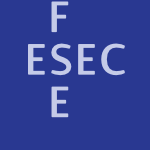 ESEC-FSE-2005-LiZ #automation #detection #named #programming #scalability
ESEC-FSE-2005-LiZ #automation #detection #named #programming #scalability- PR-Miner: automatically extracting implicit programming rules and detecting violations in large software code (ZL, YZ), pp. 306–315.
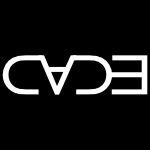 CADE-2005-FermullerP #representation
CADE-2005-FermullerP #representation- Model Representation via Contexts and Implicit Generalizations (CGF, RP), pp. 409–423.
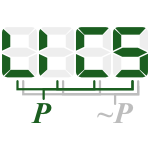 LICS-2005-EdalatP
LICS-2005-EdalatP- Inverse and Implicit Functions in Domain Theory (AE, DP), pp. 417–426.
 ASE-2004-XuRS #aspect-oriented #comprehension
ASE-2004-XuRS #aspect-oriented #comprehension- Understanding Aspects via Implicit Invocation (JX, HR, KJS), pp. 332–335.
 DAC-2004-ChopraV #algorithm #pseudo
DAC-2004-ChopraV #algorithm #pseudo- Implicit pseudo boolean enumeration algorithms for input vector control (KC, SBKV), pp. 767–772.
 DAC-2004-KravetsK #optimisation
DAC-2004-KravetsK #optimisation- Implicit enumeration of structural changes in circuit optimization (VNK, PK), pp. 438–441.
 WCRE-2004-ArevaloBN #collaboration #detection
WCRE-2004-ArevaloBN #collaboration #detection- Detecting Implicit Collaboration Patterns (GA, FB, ON), pp. 122–131.
 WCRE-2004-Harrold #analysis #control flow #source code
WCRE-2004-Harrold #analysis #control flow #source code- Static and Dynamic Analyses of Programs with Implicit Control Flow (MJH), p. 5.
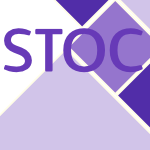 STOC-2004-BoissonnatCV #topic
STOC-2004-BoissonnatCV #topic- Isotopic implicit surface meshing (JDB, DCS, GV), pp. 301–309.
 ICALP-2004-Rytter #algorithm #encoding #string
ICALP-2004-Rytter #algorithm #encoding #string- Grammar Compression, LZ-Encodings, and String Algorithms with Implicit Input (WR), pp. 15–27.
 ECIR-2004-WhiteJRR #feedback #modelling
ECIR-2004-WhiteJRR #feedback #modelling- A Simulated Study of Implicit Feedback Models (RWW, JMJ, CJvR, IR), pp. 311–326.
 ICPR-v3-2004-LeowCPTVH #geometry #linear #representation
ICPR-v3-2004-LeowCPTVH #geometry #linear #representation- Linear and Non-linear Geometric Object Matching with Implicit Representation (ADL, MCC, HP, PMT, LAV, HSCH), pp. 710–713.
 SIGIR-2004-DumaisCSH #query
SIGIR-2004-DumaisCSH #query- Implicit queries (IQ) for contextualized search (STD, EC, RS, EH), p. 594.
 SIGIR-2004-KellyB #comprehension #feedback
SIGIR-2004-KellyB #comprehension #feedback- Display time as implicit feedback: understanding task effects (DK, NJB), pp. 377–384.
 SIGIR-2004-WhiteJ04a #predict
SIGIR-2004-WhiteJ04a #predict- An implicit system for predicting interests (RWW, JMJ), p. 595.
 SAC-2004-KagklisLT #framework #specification
SAC-2004-KagklisLT #framework #specification- A framework for implicit and explicit service activation based on Service Level Specification (DK, NL, CT), pp. 363–368.
 ICSE-2004-SinhaOH #automation #control flow #development #maintenance #testing
ICSE-2004-SinhaOH #automation #control flow #development #maintenance #testing- Automated Support for Development, Maintenance, and Testing in the Presence of Implicit Control Flow (SS, AO, MJH), pp. 336–345.
 DATE-2003-FreitasO #equation #estimation
DATE-2003-FreitasO #equation #estimation- Implicit Resolution of the Chapman-Kolmogorov Equations for Sequential Circuits: An Application in Power Estimation (ATF, ALO), pp. 10764–10769.
 DATE-2003-LeeC #3d #grid #linear #power management #simulation
DATE-2003-LeeC #3d #grid #linear #power management #simulation- The Power Grid Transient Simulation in Linear Time Based on 3D Alternating-Direction-Implicit Method (YML, CCPC), pp. 11020–11025.
 ESOP-2003-HaackW #fault #higher-order #slicing
ESOP-2003-HaackW #fault #higher-order #slicing- Type Error Slicing in Implicitly Typed Higher-Order Languages (CH, JBW), pp. 284–301.
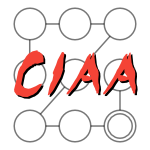 CIAA-2003-TozawaH #xml
CIAA-2003-TozawaH #xml- XML Schema Containment Checking Based on Semi-implicit Techniques (AT, MH), pp. 213–225.
 ICALP-2003-FranceschiniG
ICALP-2003-FranceschiniG- Optimal Cache-Oblivious Implicit Dictionaries (GF, RG), pp. 316–331.
 CIKM-2003-WhiteJR #approach #detection
CIKM-2003-WhiteJR #approach #detection- An approach for implicitly detecting information needs (RW, JMJ, IR), pp. 504–507.
 SIGIR-2003-XueZCMZL #analysis #web
SIGIR-2003-XueZCMZL #analysis #web- Implicit link analysis for small web search (GRX, HJZ, ZC, WYM, HZ, CJL), pp. 56–63.
 ESEC-FSE-2003-BradburyD #analysis #automation
ESEC-FSE-2003-BradburyD #analysis #automation- Evaluating and improving the automatic analysis of implicit invocation systems (JSB, JD), pp. 78–87.
 RTA-2003-BartheS #framework #induction #validation
RTA-2003-BartheS #framework #induction #validation- Validation of the JavaCard Platform with Implicit Induction Techniques (GB, SS), pp. 337–351.
 CIAA-J-2000-Champarnaud02 #automaton #evaluation #nondeterminism #regular expression
CIAA-J-2000-Champarnaud02 #automaton #evaluation #nondeterminism #regular expression- Evaluation of Three Implicit Structures to Implement Nondeterministic Automata From Regular Expressions (JMC), pp. 99–113.
 IFM-2002-LanoCA #design #development #specification
IFM-2002-LanoCA #design #development #specification- From Implicit Specifications to Explicit Designs in Reactive System Development (KL, DC, KA), pp. 49–68.
 ECIR-2002-WhiteRJ #feedback #retrieval #web
ECIR-2002-WhiteRJ #feedback #retrieval #web- The Use of Implicit Evidence for Relevance Feedback in Web Retrieval (RW, IR, JMJ), pp. 93–109.
 ICPR-v2-2002-ErcilB #classification #polynomial #using
ICPR-v2-2002-ErcilB #classification #polynomial #using- One Class Classification Using Implicit Polynomial Surface Fitting (AE, BB), pp. 152–155.
 SIGIR-2002-WhiteJR #documentation #feedback #ranking #using #web
SIGIR-2002-WhiteJR #documentation #feedback #ranking #using #web- A system using implicit feedback and top ranking sentences to help users find relevant web documents (RW, JMJ, IR), p. 446.
 CSL-2002-Leivant #complexity
CSL-2002-Leivant #complexity- Implicit Computational Complexity for Higher Type Functionals (DL), pp. 367–381.
 CIKM-2001-BlanzieriGMR #framework #information management
CIKM-2001-BlanzieriGMR #framework #information management- Information Access in Implicit Culture Framework (EB, PG, PM, SR), pp. 565–567.
 SIGIR-2001-KellyB #feedback #interactive
SIGIR-2001-KellyB #feedback #interactive- Reading Time, Scrolling and Interaction: Exploring Implicit Sources of User Preferences for Relevant Feedback (DK, NJB), pp. 408–409.
 ICLP-2001-KaneiwaT #order
ICLP-2001-KaneiwaT #order- An Order-Sorted Resolution with Implicitly Negative Sorts (KK, ST), pp. 300–314.
 IJCAR-2001-Luther #syntax
IJCAR-2001-Luther #syntax- More On Implicit Syntax (ML), pp. 386–400.
 TLCA-2001-Miquel #calculus
TLCA-2001-Miquel #calculus- The Implicit Calculus of Constructions (AM), pp. 344–359.
 CIAA-2000-Champarnaud #automaton #nondeterminism #regular expression
CIAA-2000-Champarnaud #automaton #nondeterminism #regular expression- Implicit Structures to Implement NFA’s from Regular Expressions (JMC), pp. 80–93.
 IFL-2000-SargeantKW #functional #parallel #source code
IFL-2000-SargeantKW #functional #parallel #source code- Exploiting Implicit Parallelism in Functional Programs with SLAM (JS, CCK, IW), pp. 19–36.
 IFL-2000-ZornerKEP #functional
IFL-2000-ZornerKEP #functional- Polygonizing Implicit Surfaces in a Purely Functional Way (THGZ, PWMK, MCJDvE, MJP), pp. 158–175.
 ICPR-v1-2000-Fernandez #similarity #using
ICPR-v1-2000-Fernandez #similarity #using- Implicit Model-Oriented Optimal Thresholding Using the Komolgorov-Smirnov Similarity Measure (XF), pp. 1466–1469.
 ICPR-v3-2000-HelzerBM #2d #robust
ICPR-v3-2000-HelzerBM #2d #robust- Robust Fitting of Implicit Polynomials with Quantized Coefficients to 2D Data (AH, MB, DM), pp. 3294–3297.
 POPL-2000-LewisLMS #parametricity #static typing
POPL-2000-LewisLMS #parametricity #static typing- Implicit Parameters: Dynamic Scoping with Static Types (JRL, JL, EM, MS), pp. 108–118.
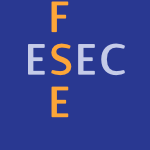 FSE-2000-WalkerM #evolution #reuse
FSE-2000-WalkerM #evolution #reuse- Implicit context: easing software evolution and reuse (RJW, GCM), pp. 69–78.
 ICSE-2000-dAstousR #bibliography
ICSE-2000-dAstousR #bibliography- Characterizing implicit information during peer review meetings (Pd, PNR), pp. 460–466.
 HPDC-2000-Anglano #comparative #evaluation #network
HPDC-2000-Anglano #comparative #evaluation #network- A Comparative Evaluation of Implicit Coscheduling Strategies for Networks of Workstations (CA), pp. 221–228.
 RTA-2000-Pichler
RTA-2000-Pichler- The Explicit Representability of Implicit Generalizations (RP), pp. 187–202.
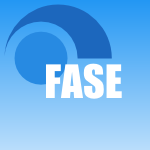 FASE-1999-GaudelKZ
FASE-1999-GaudelKZ- Dynamic Systems with Implicit State (MCG, CK, AVZ), pp. 114–128.
 CHI-1999-CzerwinskiDRDTD #information management #query #retrieval #visualisation
CHI-1999-CzerwinskiDRDTD #information management #query #retrieval #visualisation- Visualizing Implicit Queries for Information Management and Retrieval (MC, STD, GGR, SD, SLT, MvD), pp. 560–567.
 ICML-1999-PriceB #learning #multi
ICML-1999-PriceB #learning #multi- Implicit Imitation in Multiagent Reinforcement Learning (BP, CB), pp. 325–334.
 CADE-1999-FeltyHR #abstraction #syntax #using
CADE-1999-FeltyHR #abstraction #syntax #using- Formal Metatheory using Implicit Syntax, and an Application to Data Abstraction for Asynchronous Systems (APF, DJH, AR), pp. 237–251.
 DAC-1998-HasteerMB #algorithm #automaton #verification
DAC-1998-HasteerMB #algorithm #automaton #verification- An Implicit Algorithm for Finding Steady States and its Application to FSM Verification (GH, AM, PB), pp. 611–614.
 ALP-PLILP-1998-Refalo #detection #incremental
ALP-PLILP-1998-Refalo #detection #incremental- Approaches to the Incremental Detection of Implicit Equalities with the Revised Simplex Method (PR), pp. 481–496.
 FSE-1998-GarlanJN #reasoning
FSE-1998-GarlanJN #reasoning- Reasoning about Implicit Invocation (DG, SJ, DN), pp. 209–221.
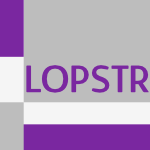 LOPSTR-1997-Christiansen #synthesis
LOPSTR-1997-Christiansen #synthesis- Implicit Program Synthesis by a Reversible Metainterpreter (HC), pp. 90–110.
 ICPR-1996-YahiaHV #image
ICPR-1996-YahiaHV #image- Temporal tracking of oceanographic images by implicit functions (HMY, IH, LV), pp. 969–973.
 SAC-1996-RajePG #analysis #named #object-oriented #source code
SAC-1996-RajePG #analysis #named #object-oriented #source code- OFFERS — a tool for hierarchical implicit analysis of sequential object-oriented programs (RRR, DP, ETG), pp. 437–441.
 DAC-1995-LiM #analysis #embedded #performance #using
DAC-1995-LiM #analysis #embedded #performance #using- Performance Analysis of Embedded Software Using Implicit Path Enumeration (YTSL, SM), pp. 456–461.
 DAC-1995-WurthEA #algorithm #composition #functional #multi
DAC-1995-WurthEA #algorithm #composition #functional #multi- Functional Multiple-Output Decomposition: Theory and an Implicit Algorithm (BW, KE, KA), pp. 54–59.
 ICALP-1995-DawarHK #finite #logic
ICALP-1995-DawarHK #finite #logic- Implicit Definability and Infinitary Logic in Finite Model Theory (AD, LH, PGK), pp. 624–635.
 FPCA-1995-AdityaAS #semantics #strict
FPCA-1995-AdityaAS #semantics #strict- Semantics of Barriers in a Non-Strict, Implicitly-Parallel Language (SA, A, JES), pp. 204–215.
 CHI-1995-MoranCMK #interactive #paradigm
CHI-1995-MoranCMK #interactive #paradigm- Implicit Structures for Pen-Based Systems within a Freeform Interaction Paradigm (TPM, PC, WvM, GK), pp. 487–494.
 CHI-1995-ShipmanMM #using
CHI-1995-ShipmanMM #using- Finding and Using Implicit Structure in Human-Organized Spatial Layouts of Information (FMSI, CCM, TPM), pp. 346–353.
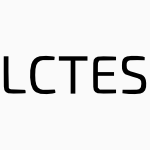 LCT-RTS-1995-LiM #analysis #embedded #performance #using
LCT-RTS-1995-LiM #analysis #embedded #performance #using- Performance Analysis of Embedded Software Using Implicit Path Enumeration (YTSL, SM), pp. 88–98.
 DAC-1994-AsharM #low cost #set
DAC-1994-AsharM #low cost #set- Implicit Computation of Minimum-Cost Feedback-Vertex Sets for Partial Scan and Other Applications (PA, SM), pp. 77–80.
 DAC-1994-HuYD #performance #verification
DAC-1994-HuYD #performance #verification- New Techniques for Efficient Verification with Implicitly Conjoined BDDs (AJH, GY, DLD), pp. 276–282.
 DAC-1994-KamVBS #algorithm
DAC-1994-KamVBS #algorithm- A Fully Implicit Algorithm for Exact State Minimization (TK, TV, RKB, ALSV), pp. 684–690.
 HPDC-1994-RammeK #scheduling
HPDC-1994-RammeK #scheduling- Scheduling a Metacomputer by an Implicit Voting System (FR, KK), pp. 106–113.
 HT-1993-MarshallS #hypermedia
HT-1993-MarshallS #hypermedia- Searching for the Missing Link: Discovering Implicit Structure in Spatial Hypertext (CCM, FMSI), pp. 217–230.
 FPCA-1993-Jones #higher-order #morphism #polymorphism
FPCA-1993-Jones #higher-order #morphism #polymorphism- A System of Constructor Classes: Overloading and Implicit Higher-Order Polymorphism (MPJ), pp. 52–64.
 HCI-SHI-1993-RizzoPCB #learning
HCI-SHI-1993-RizzoPCB #learning- Control of Complex System by Situated Knowledge: The Role of Implicit Learning (AR, OP, CC, SB), pp. 855–860.
 ICSE-1993-GarlanS #programming language
ICSE-1993-GarlanS #programming language- Adding Implicit Invocation to Rraditional Programming Languages (DG, CS), pp. 447–455.
 CAV-1993-HuD #invariant #performance #using #verification
CAV-1993-HuD #invariant #performance #using #verification- Efficient Verification with BDDs using Implicitly Conjoined Invariants (AJH, DLD), pp. 3–14.
 DAC-1992-CoudertM #incremental
DAC-1992-CoudertM #incremental- Implicit and Incremental Computation of Primes and Essential Primes of Boolean Functions (OC, JCM), pp. 36–39.
 CSCW-1992-Newman-WolfeWM #concurrent #editing #object-oriented
CSCW-1992-Newman-WolfeWM #concurrent #editing #object-oriented- Implicit Locking in the Ensemble Concurrent Object-Oriented Graphics Editor (RENW, MLW, MM), pp. 265–272.
 SEKE-1992-Hwang #information management #validation
SEKE-1992-Hwang #information management #validation- Knowledge Acquisition and Validation for Implicit Expertise (GJH), pp. 32–39.
 VLDB-1991-SiegelmannB #object-oriented #query
VLDB-1991-SiegelmannB #object-oriented #query- Integrating Implicit Answers with Object-Oriented Queries (HTS, BRB), pp. 15–24.
 ESOP-J-1990-Thatte91 #scalability #type system
ESOP-J-1990-Thatte91 #scalability #type system- A Type System for Implicit Scaling (ST), pp. 217–245.
 ICALP-1991-Larsen #power of #specification
ICALP-1991-Larsen #power of #specification- The Expressive Power of Implicit Specifications (KGL), pp. 204–216.
 VDME-1991-1-GarlanN #design #formal method
VDME-1991-1-GarlanN #design #formal method- Formalizing Design Spaces: Implicit Invocation Mechanisms (DG, DN), pp. 31–44.
 KR-1991-Lakemeyer #on the
KR-1991-Lakemeyer #on the- On the Relation between Explicit and Implicit Belief (GL), pp. 368–375.
 ESOP-1990-Thatte #scalability #type inference
ESOP-1990-Thatte #scalability #type inference- Type Inference and Implicit Scaling (ST), pp. 406–420.
 LICS-1990-Kolaitis #ambiguity #finite
LICS-1990-Kolaitis #ambiguity #finite- Implicit Definability on Finite Structures and Unambiguous Computations (Preliminary Report) (PGK), pp. 168–180.
 STOC-1989-FiatN
STOC-1989-FiatN- Implicit O(1) Probe Search (AF, MN), pp. 336–344.
 STOC-1988-KannanNR #graph #representation
STOC-1988-KannanNR #graph #representation- Implicit Representation of Graphs (SK, MN, SR), pp. 334–343.
 JICSCP-1988-KwokS88 #logic programming #source code
JICSCP-1988-KwokS88 #logic programming #source code- Implicit Definition of Logic Programs (CSK, MJS), pp. 374–385.
 ICALP-1986-BorodinFHUW #problem #taxonomy #trade-off
ICALP-1986-BorodinFHUW #problem #taxonomy #trade-off- A Tradeoff Between Search and Update Time for the Implicit Dictionary Problem (AB, FEF, FMadH, EU, AW), pp. 50–59.
 ICALP-1983-MunroP #data type
ICALP-1983-MunroP #data type- Searchability in Merging and Implicit Data Structures (JIM, PVP), pp. 527–535.
 SDCG-1980-Reynolds #category theory #design #using
SDCG-1980-Reynolds #category theory #design #using- Using category theory to design implicit conversions and generic operators (JCR), pp. 211–258.
 STOC-1979-MunroS #data type
STOC-1979-MunroS #data type- Implicit Data Structures (Preliminary Draft) (JIM, HS), pp. 108–117.
 GG-1978-GrotschN #graph #parallel
GG-1978-GrotschN #graph #parallel- Explicit versus Implicit Parallel Rewriting on Graphs (EG, MN), pp. 237–254.
 DAC-2015-KehrQBS #communication #execution #legacy #manycore #parallel
DAC-2015-KehrQBS #communication #execution #legacy #manycore #parallel SIGMOD-2015-AlexandrovKKSTK #parallel
SIGMOD-2015-AlexandrovKKSTK #parallel TACAS-2015-TomascoI0TP #contest #memory management
TACAS-2015-TomascoI0TP #contest #memory management CHI-2015-HanXSCW #design #game studies #mobile #monitoring
CHI-2015-HanXSCW #design #game studies #mobile #monitoring HCI-IT-2015-MijovicMMMKG #fault #human-computer #predict #towards
HCI-IT-2015-MijovicMMMKG #fault #human-computer #predict #towards RecSys-2015-LimML #feedback #recommendation
RecSys-2015-LimML #feedback #recommendation SIGIR-2015-ZhangGKDDCGH #adaptation #feedback #named #query
SIGIR-2015-ZhangGKDDCGH #adaptation #feedback #named #query ECOOP-2015-PradelS #empirical #javascript
ECOOP-2015-PradelS #empirical #javascript GPCE-2015-InostrozaS #algebra #composition #using
GPCE-2015-InostrozaS #algebra #composition #using SAC-2015-PapouliasDDF #towards
SAC-2015-PapouliasDDF #towards ICSE-v2-2015-Bichhawat #analysis
ICSE-v2-2015-Bichhawat #analysis DATE-2014-BanagaayaAST #network #order #reduction
DATE-2014-BanagaayaAST #network #order #reduction HT-2014-ZhangBR #analysis #empirical #network #social #social media
HT-2014-ZhangBR #analysis #empirical #network #social #social media VLDB-2014-LiagourisT #identification #knowledge base #owl #performance
VLDB-2014-LiagourisT #identification #knowledge base #owl #performance TACAS-2014-CimattiGMT #abstraction #modulo theories
TACAS-2014-CimattiGMT #abstraction #modulo theories CHI-2014-BurgbacherH #gesture #type system #verification
CHI-2014-BurgbacherH #gesture #type system #verification CHI-2014-GoyalLCF #analysis #collaboration
CHI-2014-GoyalLCF #analysis #collaboration CHI-2014-SuAL
CHI-2014-SuAL CIKM-2014-CamposDJN #named #query
CIKM-2014-CamposDJN #named #query CIKM-2014-ZhongPXYM #adaptation #collaboration #learning #recommendation
CIKM-2014-ZhongPXYM #adaptation #collaboration #learning #recommendation ECIR-2014-CamposDJN #clustering #interface #named #query
ECIR-2014-CamposDJN #clustering #interface #named #query ICML-c2-2014-LinDH0 #classification #encoding #multi
ICML-c2-2014-LinDH0 #classification #encoding #multi ICPR-2014-ChenH #composition #detection
ICPR-2014-ChenH #composition #detection ICPR-2014-HuynhCM #3d #constraints #geometry #using #video
ICPR-2014-HuynhCM #3d #constraints #geometry #using #video ICPR-2014-KrytheL #analysis #linear
ICPR-2014-KrytheL #analysis #linear ICPR-2014-ManzatoDMR #feedback #personalisation #ranking #recommendation #topic
ICPR-2014-ManzatoDMR #feedback #personalisation #ranking #recommendation #topic RecSys-2014-Aiolli #feedback #optimisation #recommendation
RecSys-2014-Aiolli #feedback #optimisation #recommendation RecSys-2014-FazeliLBDS #matrix #social #trust
RecSys-2014-FazeliLBDS #matrix #social #trust RecSys-2014-LercheJ #feedback #personalisation #ranking #using
RecSys-2014-LercheJ #feedback #personalisation #ranking #using SEKE-2014-TianWHZG #feedback #recommendation #using #web #web service
SEKE-2014-TianWHZG #feedback #recommendation #using #web #web service MoDELS-2014-BakiSCMF #learning #model transformation
MoDELS-2014-BakiSCMF #learning #model transformation MoDELS-2014-BakiSCMF #learning #model transformation
MoDELS-2014-BakiSCMF #learning #model transformation ECOOP-2014-ScherrC #staging
ECOOP-2014-ScherrC #staging SAC-2014-GuoZTBY #empirical #recommendation #trust
SAC-2014-GuoZTBY #empirical #recommendation #trust PPoPP-2014-AgrawalFSSU #data type #parallel #scheduling #source code
PPoPP-2014-AgrawalFSSU #data type #parallel #scheduling #source code RTA-TLCA-2014-CarvalhoS #decidability #polynomial #set
RTA-TLCA-2014-CarvalhoS #decidability #polynomial #set ICDAR-2013-SeokK #recognition
ICDAR-2013-SeokK #recognition ITiCSE-2013-ScottG #learning #programming #question
ITiCSE-2013-ScottG #learning #programming #question ICALP-v2-2013-LeivantM #complexity #evolution
ICALP-v2-2013-LeivantM #complexity #evolution SEFM-2013-TranST #composition #static analysis #transaction
SEFM-2013-TranST #composition #static analysis #transaction CHI-2013-ZhaoWB #multi #named
CHI-2013-ZhaoWB #multi #named DUXU-PMT-2013-Bystricky
DUXU-PMT-2013-Bystricky RecSys-2013-BlancoR #feedback #recommendation
RecSys-2013-BlancoR #feedback #recommendation RecSys-2013-OstuniNSM #feedback #linked data #open data #recommendation
RecSys-2013-OstuniNSM #feedback #linked data #open data #recommendation RecSys-2013-YuRSSKGNH #feedback #network #recommendation
RecSys-2013-YuRSSKGNH #feedback #network #recommendation SIGIR-2013-Ma #case study #recommendation #social
SIGIR-2013-Ma #case study #recommendation #social SIGIR-2013-MoshfeghiJ #behaviour #effectiveness #feedback #using
SIGIR-2013-MoshfeghiJ #behaviour #effectiveness #feedback #using SAC-2013-Manzato #feedback #metadata #recommendation
SAC-2013-Manzato #feedback #metadata #recommendation HT-2012-MatthesNS #folksonomy
HT-2012-MatthesNS #folksonomy PODS-2012-Mahoney #approximate #data analysis #scalability
PODS-2012-Mahoney #approximate #data analysis #scalability PEPM-2012-GotoS #approach #functional
PEPM-2012-GotoS #approach #functional PLDI-2012-OliveiraSCLY #calculus #programming
PLDI-2012-OliveiraSCLY #calculus #programming LATA-2012-BolligP #algorithm #performance
LATA-2012-BolligP #algorithm #performance CHI-2012-DearmanT #using
CHI-2012-DearmanT #using CHI-2012-HoarauC #interactive #visual notation
CHI-2012-HoarauC #interactive #visual notation CHI-2012-LucaHBLH #authentication #exclamation
CHI-2012-LucaHBLH #authentication #exclamation CHI-2012-MustafaLM #analysis #visual notation
CHI-2012-MustafaLM #analysis #visual notation CHI-2012-SeitlingerL #re-engineering #semantics #social
CHI-2012-SeitlingerL #re-engineering #semantics #social CIKM-2012-FangS #approach #feedback #learning #recommendation
CIKM-2012-FangS #approach #feedback #learning #recommendation CIKM-2012-HongZCYZZ #recognition
CIKM-2012-HongZCYZZ #recognition CIKM-2012-LinXLHL #named #personalisation #recommendation #social
CIKM-2012-LinXLHL #named #personalisation #recommendation #social ICPR-2012-RadwanDG #detection #estimation
ICPR-2012-RadwanDG #detection #estimation KDD-2012-RamanSJ #feedback #learning #online
KDD-2012-RamanSJ #feedback #learning #online KDD-2012-XiongJXC #dependence #learning #metric #random
KDD-2012-XiongJXC #dependence #learning #metric #random KEOD-2012-AbdelazzizN #ontology #recommendation #using
KEOD-2012-AbdelazzizN #ontology #recommendation #using KR-2012-Renz #constraints #reasoning
KR-2012-Renz #constraints #reasoning RecSys-2012-MolingBR #feedback #recommendation
RecSys-2012-MolingBR #feedback #recommendation RecSys-2012-YangCZLY #feedback #mining #music #recommendation
RecSys-2012-YangCZLY #feedback #mining #music #recommendation SIGIR-2012-HeHV #topic
SIGIR-2012-HeHV #topic SIGIR-2012-WhiteB #feedback
SIGIR-2012-WhiteB #feedback REFSQ-2012-DaramolaMSB #perspective #reasoning #requirements #research #semantics #using
REFSQ-2012-DaramolaMSB #perspective #reasoning #requirements #research #semantics #using DAC-2011-Stergiou #diagrams #network #order #permutation
DAC-2011-Stergiou #diagrams #network #order #permutation HT-2011-AshmanACST
HT-2011-AshmanACST ESOP-2011-ParkinsonS #logic
ESOP-2011-ParkinsonS #logic PLDI-2011-PrabhuGZJA #commutative #parallel #programming #set
PLDI-2011-PrabhuGZJA #commutative #parallel #programming #set ICFP-2011-ChenDHA #functional #self #source code
ICFP-2011-ChenDHA #functional #self #source code CHI-2011-DenningBDJ #memory management
CHI-2011-DenningBDJ #memory management CSCW-2011-BalesLG #communication #mobile #named
CSCW-2011-BalesLG #communication #mobile #named DHM-2011-Maier #human-computer #interactive #recognition
DHM-2011-Maier #human-computer #interactive #recognition HCI-MIIE-2011-ChangL #design #interactive #social
HCI-MIIE-2011-ChangL #design #interactive #social HCI-MIIE-2011-KamiethBS #adaptation #interactive
HCI-MIIE-2011-KamiethBS #adaptation #interactive ICML-2011-MahoneyO #approximate #implementation
ICML-2011-MahoneyO #approximate #implementation ICML-2011-SujeethLBRCWAOO #domain-specific language #machine learning #named #parallel
ICML-2011-SujeethLBRCWAOO #domain-specific language #machine learning #named #parallel KDIR-2011-OzakiE #difference #empirical #estimation
KDIR-2011-OzakiE #difference #empirical #estimation RecSys-2011-TakacsPT #collaboration #feedback
RecSys-2011-TakacsPT #collaboration #feedback OOPSLA-2011-AcarCR #parallel #scheduling
OOPSLA-2011-AcarCR #parallel #scheduling PPoPP-2011-FengGH #commit #named #parallel #scalability
PPoPP-2011-FengGH #commit #named #parallel #scalability HT-2010-PaekHS #hypermedia #learning
HT-2010-PaekHS #hypermedia #learning HT-2010-YeungI #online #social
HT-2010-YeungI #online #social CSMR-2010-LiuM #analysis #case study #data flow
CSMR-2010-LiuM #analysis #case study #data flow IFM-2010-Stratulat #induction #proving
IFM-2010-Stratulat #induction #proving CHI-2010-KuikkaniemiLTSKR #game studies
CHI-2010-KuikkaniemiLTSKR #game studies CIKM-2010-LiuXZY #collaboration #feedback
CIKM-2010-LiuXZY #collaboration #feedback ICML-2010-KulisB #learning #online
ICML-2010-KulisB #learning #online ICML-2010-NakajimaS #matrix
ICML-2010-NakajimaS #matrix ICPR-2010-DupeBBLE #kernel
ICPR-2010-DupeBBLE #kernel ICPR-2010-HuYLS #3d #locality #multi #novel #using
ICPR-2010-HuYLS #3d #locality #multi #novel #using ICPR-2010-SungCCB #3d #estimation #mobile
ICPR-2010-SungCCB #3d #estimation #mobile ICPR-2010-ThiCZWS #modelling #recognition #using
ICPR-2010-ThiCZWS #modelling #recognition #using ICPR-2010-YamakoshiHOKSSIYSM
ICPR-2010-YamakoshiHOKSSIYSM KDD-2010-RothBDFHLLMM #graph #social #using
KDD-2010-RothBDFHLLMM #graph #social #using KDIR-2010-SinghMG #feedback #query #realtime
KDIR-2010-SinghMG #feedback #query #realtime KDIR-2010-VeilumuthuR
KDIR-2010-VeilumuthuR RecSys-2010-PilaszyZT #dataset #feedback #matrix #performance
RecSys-2010-PilaszyZT #dataset #feedback #matrix #performance OOPSLA-2010-OliveiraMO
OOPSLA-2010-OliveiraMO GPCE-2010-LongMSR #concurrent
GPCE-2010-LongMSR #concurrent SAC-2010-KrajcaV #functional #memory management #parallel #transaction
SAC-2010-KrajcaV #functional #memory management #parallel #transaction SAC-2010-PawlitzkiS
SAC-2010-PawlitzkiS HPCA-2010-HuangSWSXM #named #permutation
HPCA-2010-HuangSWSXM #named #permutation CAV-2010-ChenCFTTW #automation #learning #reasoning
CAV-2010-ChenCFTTW #automation #learning #reasoning CSL-2010-Hetzl #calculus #representation
CSL-2010-Hetzl #calculus #representation CHI-2009-KostakosO #assessment #design #trust
CHI-2009-KostakosO #assessment #design #trust CHI-2009-ZhaoNII #interface
CHI-2009-ZhaoNII #interface HCI-NIMT-2009-BravoHFVCNFCPV #identification #interactive #towards
HCI-NIMT-2009-BravoHFVCNFCPV #identification #interactive #towards OCSC-2009-VoiskounskyMA #game studies
OCSC-2009-VoiskounskyMA #game studies CIKM-2009-Paranjpe #documentation #feedback #learning
CIKM-2009-Paranjpe #documentation #feedback #learning SIGIR-2009-BuscherED #comparison #eye tracking #feedback
SIGIR-2009-BuscherED #comparison #eye tracking #feedback SIGIR-2009-MetzlerJPZ #query
SIGIR-2009-MetzlerJPZ #query ECOOP-2009-SmansJP #logic
ECOOP-2009-SmansJP #logic SAC-2009-ChengGL
SAC-2009-ChengGL SAC-2009-MartinsBPS #feedback #information retrieval
SAC-2009-MartinsBPS #feedback #information retrieval DAC-2008-Cummings #design #verification
DAC-2008-Cummings #design #verification DocEng-2008-BalinskyWRA #automation #documentation
DocEng-2008-BalinskyWRA #automation #documentation FoSSaCS-2008-BarrasB #calculus #dependent type #programming language
FoSSaCS-2008-BarrasB #calculus #dependent type #programming language ICFP-2008-FluetRRS #parallel #thread
ICFP-2008-FluetRRS #parallel #thread CHI-2008-OviattSA #adaptation #interface #speech
CHI-2008-OviattSA #adaptation #interface #speech CHI-2008-ShenoyT #image
CHI-2008-ShenoyT #image CSCW-2008-JuLK #design #interactive #named
CSCW-2008-JuLK #design #interactive #named ICEIS-ISAS2-2008-Nikovski #concurrent #mining #process #representation #workflow
ICEIS-ISAS2-2008-Nikovski #concurrent #mining #process #representation #workflow CIKM-2008-CardosoSS #information retrieval
CIKM-2008-CardosoSS #information retrieval ECIR-2008-ScholerSBT #using
ECIR-2008-ScholerSBT #using ECIR-2008-ValletHJ #evaluation #graph #recommendation
ECIR-2008-ValletHJ #evaluation #graph #recommendation ICML-2008-PuolamakiAK #learning #query
ICML-2008-PuolamakiAK #learning #query ICPR-2008-JiangT #normalisation #robust
ICPR-2008-JiangT #normalisation #robust ICPR-2008-WimmerHS #bound #classification
ICPR-2008-WimmerHS #bound #classification SAC-2008-SykoraAS #embedded #pipes and filters
SAC-2008-SykoraAS #embedded #pipes and filters IJCAR-2008-AvanziniMS #analysis #automation #complexity
IJCAR-2008-AvanziniMS #analysis #automation #complexity DAC-2007-HwuRUKGSKBMTNLFP #modelling #parallel #programming
DAC-2007-HwuRUKGSKBMTNLFP #modelling #parallel #programming ICFP-2007-GhuloumD #library
ICFP-2007-GhuloumD #library ICFP-2007-HarrisS #feedback #parallel
ICFP-2007-HarrisS #feedback #parallel CHI-2007-ToupsK #coordination #design #education
CHI-2007-ToupsK #coordination #design #education CIKM-2007-MelucciW #feedback #geometry
CIKM-2007-MelucciW #feedback #geometry RecSys-2007-Fu #feedback #web
RecSys-2007-Fu #feedback #web RecSys-2007-GadanhoL #nondeterminism
RecSys-2007-GadanhoL #nondeterminism PPoPP-2007-PraunCC #order #parallel #transaction
PPoPP-2007-PraunCC #order #parallel #transaction DAC-2006-WongB #multi #performance #polynomial
DAC-2006-WongB #multi #performance #polynomial DATE-2006-McConaghyG #canonical #modelling #performance
DATE-2006-McConaghyG #canonical #modelling #performance HT-2006-Delort #documentation #identification #using
HT-2006-Delort #documentation #identification #using SCAM-J-2005-ZhangBCD06 #using
SCAM-J-2005-ZhangBCD06 #using CIKM-2006-WhiteK #case study #feedback #performance #personalisation
CIKM-2006-WhiteK #case study #feedback #performance #personalisation CIKM-2006-ZigorisZ #adaptation #feedback #profiling
CIKM-2006-ZigorisZ #adaptation #feedback #profiling ICPR-v1-2006-Solem #analysis
ICPR-v1-2006-Solem #analysis ICPR-v1-2006-Solem06a #analysis
ICPR-v1-2006-Solem06a #analysis SIGIR-2006-XuM
SIGIR-2006-XuM SAC-2006-CavalinBBSO #recognition #string
SAC-2006-CavalinBBSO #recognition #string SAC-2006-ShapiraTM
SAC-2006-ShapiraTM CSL-2006-BonfanteKMO #towards
CSL-2006-BonfanteKMO #towards SAT-2006-Thurley #component #modelling #named
SAT-2006-Thurley #component #modelling #named DATE-2005-KumarTCJ #fault
DATE-2005-KumarTCJ #fault DRR-2005-BairdB
DRR-2005-BairdB ITiCSE-2005-Prakash05a
ITiCSE-2005-Prakash05a SCAM-2005-ZhangBCD #implementation #using #verification
SCAM-2005-ZhangBCD #implementation #using #verification CIKM-2005-ShenTZ #modelling #personalisation
CIKM-2005-ShenTZ #modelling #personalisation ICML-2005-WalderCS #modelling #problem
ICML-2005-WalderCS #modelling #problem KDD-2005-RadlinskiJ #feedback #learning #query #rank
KDD-2005-RadlinskiJ #feedback #learning #query #rank SIGIR-2005-JoachimsGPHG #feedback
SIGIR-2005-JoachimsGPHG #feedback SIGIR-2005-SharmaJ #automation #evaluation #feedback #performance
SIGIR-2005-SharmaJ #automation #evaluation #feedback #performance SIGIR-2005-ShenTZ #feedback #information management #information retrieval #using
SIGIR-2005-ShenTZ #feedback #information management #information retrieval #using SIGIR-2005-WhiteRJ #case study #feedback
SIGIR-2005-WhiteRJ #case study #feedback GPCE-2005-EckhardtKPST #multi #programming
GPCE-2005-EckhardtKPST #multi #programming SAC-2005-TafatCH #coordination #pervasive
SAC-2005-TafatCH #coordination #pervasive ESEC-FSE-2005-LiZ #automation #detection #named #programming #scalability
ESEC-FSE-2005-LiZ #automation #detection #named #programming #scalability CADE-2005-FermullerP #representation
CADE-2005-FermullerP #representation LICS-2005-EdalatP
LICS-2005-EdalatP ASE-2004-XuRS #aspect-oriented #comprehension
ASE-2004-XuRS #aspect-oriented #comprehension DAC-2004-ChopraV #algorithm #pseudo
DAC-2004-ChopraV #algorithm #pseudo DAC-2004-KravetsK #optimisation
DAC-2004-KravetsK #optimisation WCRE-2004-ArevaloBN #collaboration #detection
WCRE-2004-ArevaloBN #collaboration #detection WCRE-2004-Harrold #analysis #control flow #source code
WCRE-2004-Harrold #analysis #control flow #source code STOC-2004-BoissonnatCV #topic
STOC-2004-BoissonnatCV #topic ICALP-2004-Rytter #algorithm #encoding #string
ICALP-2004-Rytter #algorithm #encoding #string ECIR-2004-WhiteJRR #feedback #modelling
ECIR-2004-WhiteJRR #feedback #modelling ICPR-v3-2004-LeowCPTVH #geometry #linear #representation
ICPR-v3-2004-LeowCPTVH #geometry #linear #representation SIGIR-2004-DumaisCSH #query
SIGIR-2004-DumaisCSH #query SIGIR-2004-KellyB #comprehension #feedback
SIGIR-2004-KellyB #comprehension #feedback SIGIR-2004-WhiteJ04a #predict
SIGIR-2004-WhiteJ04a #predict SAC-2004-KagklisLT #framework #specification
SAC-2004-KagklisLT #framework #specification ICSE-2004-SinhaOH #automation #control flow #development #maintenance #testing
ICSE-2004-SinhaOH #automation #control flow #development #maintenance #testing DATE-2003-FreitasO #equation #estimation
DATE-2003-FreitasO #equation #estimation DATE-2003-LeeC #3d #grid #linear #power management #simulation
DATE-2003-LeeC #3d #grid #linear #power management #simulation ESOP-2003-HaackW #fault #higher-order #slicing
ESOP-2003-HaackW #fault #higher-order #slicing CIAA-2003-TozawaH #xml
CIAA-2003-TozawaH #xml ICALP-2003-FranceschiniG
ICALP-2003-FranceschiniG CIKM-2003-WhiteJR #approach #detection
CIKM-2003-WhiteJR #approach #detection SIGIR-2003-XueZCMZL #analysis #web
SIGIR-2003-XueZCMZL #analysis #web ESEC-FSE-2003-BradburyD #analysis #automation
ESEC-FSE-2003-BradburyD #analysis #automation RTA-2003-BartheS #framework #induction #validation
RTA-2003-BartheS #framework #induction #validation CIAA-J-2000-Champarnaud02 #automaton #evaluation #nondeterminism #regular expression
CIAA-J-2000-Champarnaud02 #automaton #evaluation #nondeterminism #regular expression IFM-2002-LanoCA #design #development #specification
IFM-2002-LanoCA #design #development #specification ECIR-2002-WhiteRJ #feedback #retrieval #web
ECIR-2002-WhiteRJ #feedback #retrieval #web ICPR-v2-2002-ErcilB #classification #polynomial #using
ICPR-v2-2002-ErcilB #classification #polynomial #using SIGIR-2002-WhiteJR #documentation #feedback #ranking #using #web
SIGIR-2002-WhiteJR #documentation #feedback #ranking #using #web CSL-2002-Leivant #complexity
CSL-2002-Leivant #complexity CIKM-2001-BlanzieriGMR #framework #information management
CIKM-2001-BlanzieriGMR #framework #information management SIGIR-2001-KellyB #feedback #interactive
SIGIR-2001-KellyB #feedback #interactive ICLP-2001-KaneiwaT #order
ICLP-2001-KaneiwaT #order IJCAR-2001-Luther #syntax
IJCAR-2001-Luther #syntax TLCA-2001-Miquel #calculus
TLCA-2001-Miquel #calculus CIAA-2000-Champarnaud #automaton #nondeterminism #regular expression
CIAA-2000-Champarnaud #automaton #nondeterminism #regular expression IFL-2000-SargeantKW #functional #parallel #source code
IFL-2000-SargeantKW #functional #parallel #source code IFL-2000-ZornerKEP #functional
IFL-2000-ZornerKEP #functional ICPR-v1-2000-Fernandez #similarity #using
ICPR-v1-2000-Fernandez #similarity #using ICPR-v3-2000-HelzerBM #2d #robust
ICPR-v3-2000-HelzerBM #2d #robust POPL-2000-LewisLMS #parametricity #static typing
POPL-2000-LewisLMS #parametricity #static typing FSE-2000-WalkerM #evolution #reuse
FSE-2000-WalkerM #evolution #reuse ICSE-2000-dAstousR #bibliography
ICSE-2000-dAstousR #bibliography HPDC-2000-Anglano #comparative #evaluation #network
HPDC-2000-Anglano #comparative #evaluation #network RTA-2000-Pichler
RTA-2000-Pichler FASE-1999-GaudelKZ
FASE-1999-GaudelKZ CHI-1999-CzerwinskiDRDTD #information management #query #retrieval #visualisation
CHI-1999-CzerwinskiDRDTD #information management #query #retrieval #visualisation ICML-1999-PriceB #learning #multi
ICML-1999-PriceB #learning #multi CADE-1999-FeltyHR #abstraction #syntax #using
CADE-1999-FeltyHR #abstraction #syntax #using DAC-1998-HasteerMB #algorithm #automaton #verification
DAC-1998-HasteerMB #algorithm #automaton #verification ALP-PLILP-1998-Refalo #detection #incremental
ALP-PLILP-1998-Refalo #detection #incremental FSE-1998-GarlanJN #reasoning
FSE-1998-GarlanJN #reasoning LOPSTR-1997-Christiansen #synthesis
LOPSTR-1997-Christiansen #synthesis ICPR-1996-YahiaHV #image
ICPR-1996-YahiaHV #image SAC-1996-RajePG #analysis #named #object-oriented #source code
SAC-1996-RajePG #analysis #named #object-oriented #source code DAC-1995-LiM #analysis #embedded #performance #using
DAC-1995-LiM #analysis #embedded #performance #using DAC-1995-WurthEA #algorithm #composition #functional #multi
DAC-1995-WurthEA #algorithm #composition #functional #multi ICALP-1995-DawarHK #finite #logic
ICALP-1995-DawarHK #finite #logic FPCA-1995-AdityaAS #semantics #strict
FPCA-1995-AdityaAS #semantics #strict CHI-1995-MoranCMK #interactive #paradigm
CHI-1995-MoranCMK #interactive #paradigm CHI-1995-ShipmanMM #using
CHI-1995-ShipmanMM #using LCT-RTS-1995-LiM #analysis #embedded #performance #using
LCT-RTS-1995-LiM #analysis #embedded #performance #using DAC-1994-AsharM #low cost #set
DAC-1994-AsharM #low cost #set DAC-1994-HuYD #performance #verification
DAC-1994-HuYD #performance #verification DAC-1994-KamVBS #algorithm
DAC-1994-KamVBS #algorithm HPDC-1994-RammeK #scheduling
HPDC-1994-RammeK #scheduling HT-1993-MarshallS #hypermedia
HT-1993-MarshallS #hypermedia FPCA-1993-Jones #higher-order #morphism #polymorphism
FPCA-1993-Jones #higher-order #morphism #polymorphism HCI-SHI-1993-RizzoPCB #learning
HCI-SHI-1993-RizzoPCB #learning ICSE-1993-GarlanS #programming language
ICSE-1993-GarlanS #programming language CAV-1993-HuD #invariant #performance #using #verification
CAV-1993-HuD #invariant #performance #using #verification DAC-1992-CoudertM #incremental
DAC-1992-CoudertM #incremental CSCW-1992-Newman-WolfeWM #concurrent #editing #object-oriented
CSCW-1992-Newman-WolfeWM #concurrent #editing #object-oriented SEKE-1992-Hwang #information management #validation
SEKE-1992-Hwang #information management #validation VLDB-1991-SiegelmannB #object-oriented #query
VLDB-1991-SiegelmannB #object-oriented #query ESOP-J-1990-Thatte91 #scalability #type system
ESOP-J-1990-Thatte91 #scalability #type system ICALP-1991-Larsen #power of #specification
ICALP-1991-Larsen #power of #specification VDME-1991-1-GarlanN #design #formal method
VDME-1991-1-GarlanN #design #formal method KR-1991-Lakemeyer #on the
KR-1991-Lakemeyer #on the ESOP-1990-Thatte #scalability #type inference
ESOP-1990-Thatte #scalability #type inference LICS-1990-Kolaitis #ambiguity #finite
LICS-1990-Kolaitis #ambiguity #finite STOC-1989-FiatN
STOC-1989-FiatN STOC-1988-KannanNR #graph #representation
STOC-1988-KannanNR #graph #representation JICSCP-1988-KwokS88 #logic programming #source code
JICSCP-1988-KwokS88 #logic programming #source code ICALP-1986-BorodinFHUW #problem #taxonomy #trade-off
ICALP-1986-BorodinFHUW #problem #taxonomy #trade-off ICALP-1983-MunroP #data type
ICALP-1983-MunroP #data type SDCG-1980-Reynolds #category theory #design #using
SDCG-1980-Reynolds #category theory #design #using STOC-1979-MunroS #data type
STOC-1979-MunroS #data type GG-1978-GrotschN #graph #parallel
GG-1978-GrotschN #graph #parallel









